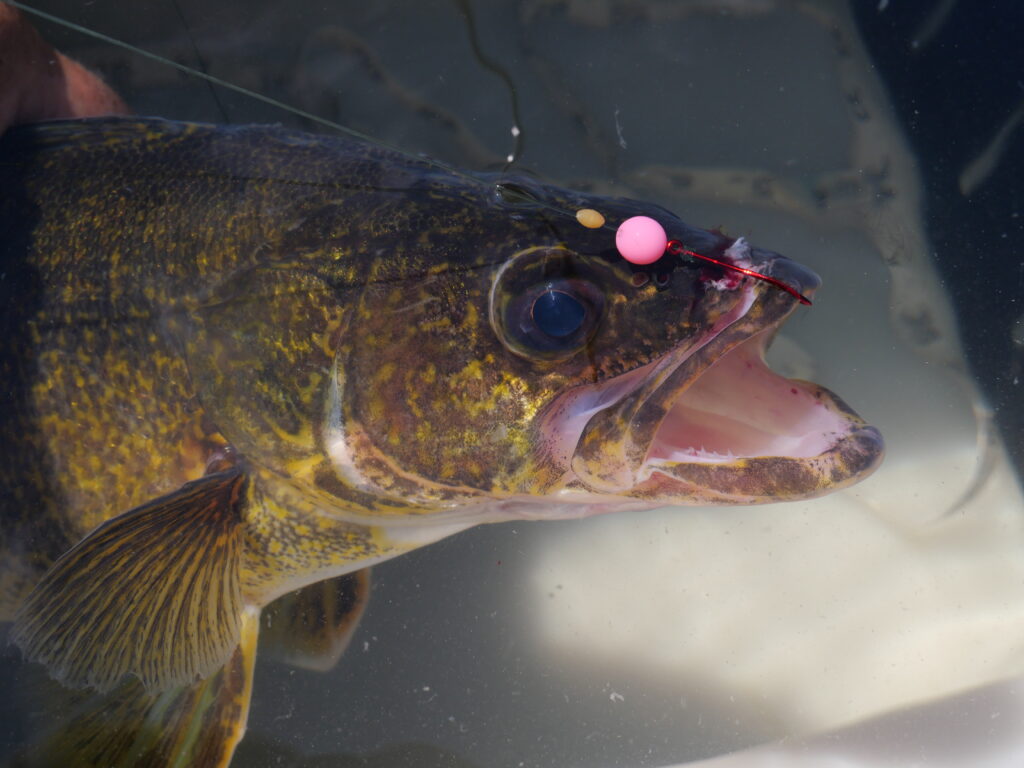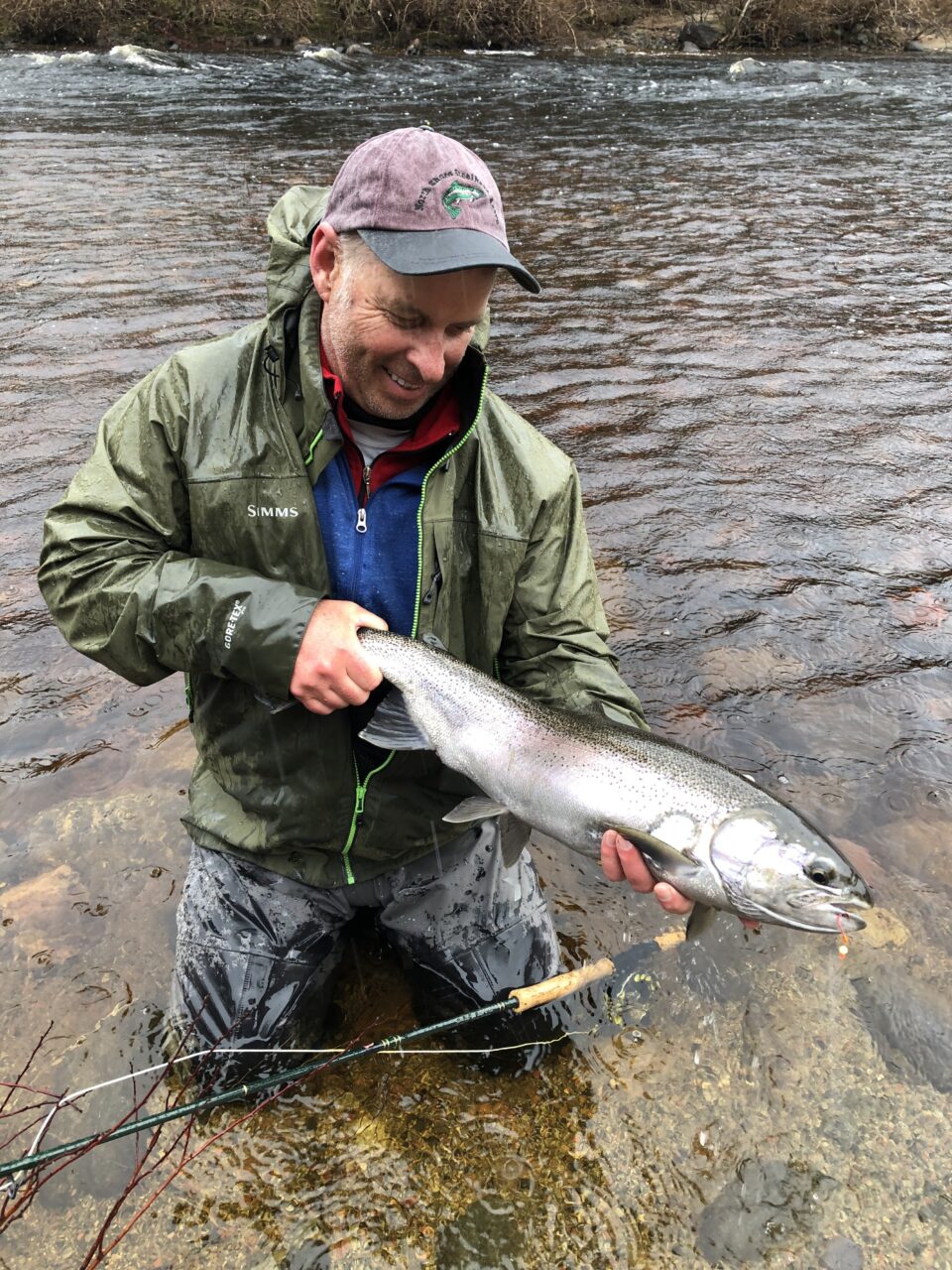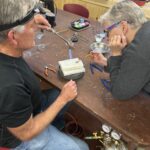Walk through any tackle shop and you will find an impressive array of lures, hooks, and fish attractors. All can catch fish, and the most successful ones also catch anglers. However, there is a presentation that is so simple, it is just silly. The bead is one of the simplest, cheapest, and most effective fishing accessories you can have. It is deadly as an egg substitute for trout and salmon, it’s an attractor on a spinner, and can provide colour when used with a live bait rig.
Let’s take a dive into the world of beads and how an angler can use them.
The Bead
Most beads used in freshwater angling are plastic, with wide variations in hardness and texture. Glass beads are also used by anglers and can provide extra weight to a presentation. All beads used for fishing have a hole in the centre that allows the line to be threaded through it. The size of the hole can vary, depending on what the bead is used for and the bead size. Beads for fishing range from 1.5 mm (on the small side) to 5.5 mm on the large size. There are commercial bead kits for sale in many sporting goods stores, and some include a variety of different sizes. Consider what you will need the beads for the most before investing. Also, beads are used for all manner of crafts, and I’ve found some really cool colours at hobby and craft shops for an affordable price.
Beads for Trout and Salmon
For many Ontario steelhead anglers, bead fishing is a proven fish catcher. When fishing a single (or double) bead rig, always use a #4, #6, or #8 thin wire, and a short shank hook with an upturned eye. This hook is attached with a snell or egg loop knot. This knot holds the shank in line with your line and provides a direct pull on the hook when a fish hits. You can anchor the bead with a soft plastic peg, rubber band, or even a toothpick. Rubber bobber stops placed on both sides of the bead allow for easy adjustments of a bead as well. About a two-finger gap between the bead and hook is the standard.

Beads can be fished with fly tackle, drifted on spinning tackle, or centre pinned under a float. There really is no end to what a bead can do as a trout attractant. Single beads look like eggs that are drifting downstream, so they are especially deadly in rivers and current areas. In all but the smallest creek, I like to fish a double bead rig with two different colours or two different sized beads. In clear water, translucent beads of orange, red, or chartreuse really shine, but there is a wide array of colours and shades to try. You can also add a bead to a yarn fly or rubber worm. A single bead can also be effective fished under a float, especially in low water. Many steelhead and salmon anglers have discovered a glass bead hangs well and will swing nicely under a float. Keep the bead just off the bottom and you should be in business.
Beads and Live Bait Rigs
If you like to catch walleye, you likely know about the live bait rig. You back troll a chub, sucker minnow, worm, or leach via a slip sinker rig or bottom bouncer. The bait is placed on a hook and trails behind the sinker. This works as is of course. However, add a bead in front of the hook and you have a little extra attraction. The plastic bead is an attractor for sure, but it is also buoyant, something that really helps when fished in front of a worm or leech. The bead can run free on the leader in front of the hook or be anchored in place. I tend to allow a bead to free range on the leader, which means it may not always be right in front of the hook and bait. There are no rules in this game. Let your success decide what the fish might prefer.
Beads and Spinner Rigs
Classic walleye spinner rigs come in many forms and are built on a monofilament or fluorocarbon leader. The spinner rig will have a clevis, blade, snelled hook, and swivel for the main line. Yet it’s the beads that provide the deadly mix of colour, buoyancy, and bulk. You can buy commercial spinner rigs, and they will have a variety of coloured bead options. My preference is to customize a pre-tied spinner or make them from scratch with a few new beads. Beads are not always perfectly round, in fact they can come in some very unusual shapes. Some of the options can include beads with spikes, bumps and squares, and other oddities. While these funky shaped beads may not be the best egg imitation, they can add some interest and sex appeal to a spinner rig. Spinners with muti-coloured beads look like jewelry, yet the overall impact of that string of colour and shapes makes for a very appealing presentation behind a spinner.
Beads can work wonder in a wide variety of fishing situations. Add them to your arsenal this spring and prepare to be impressed.




